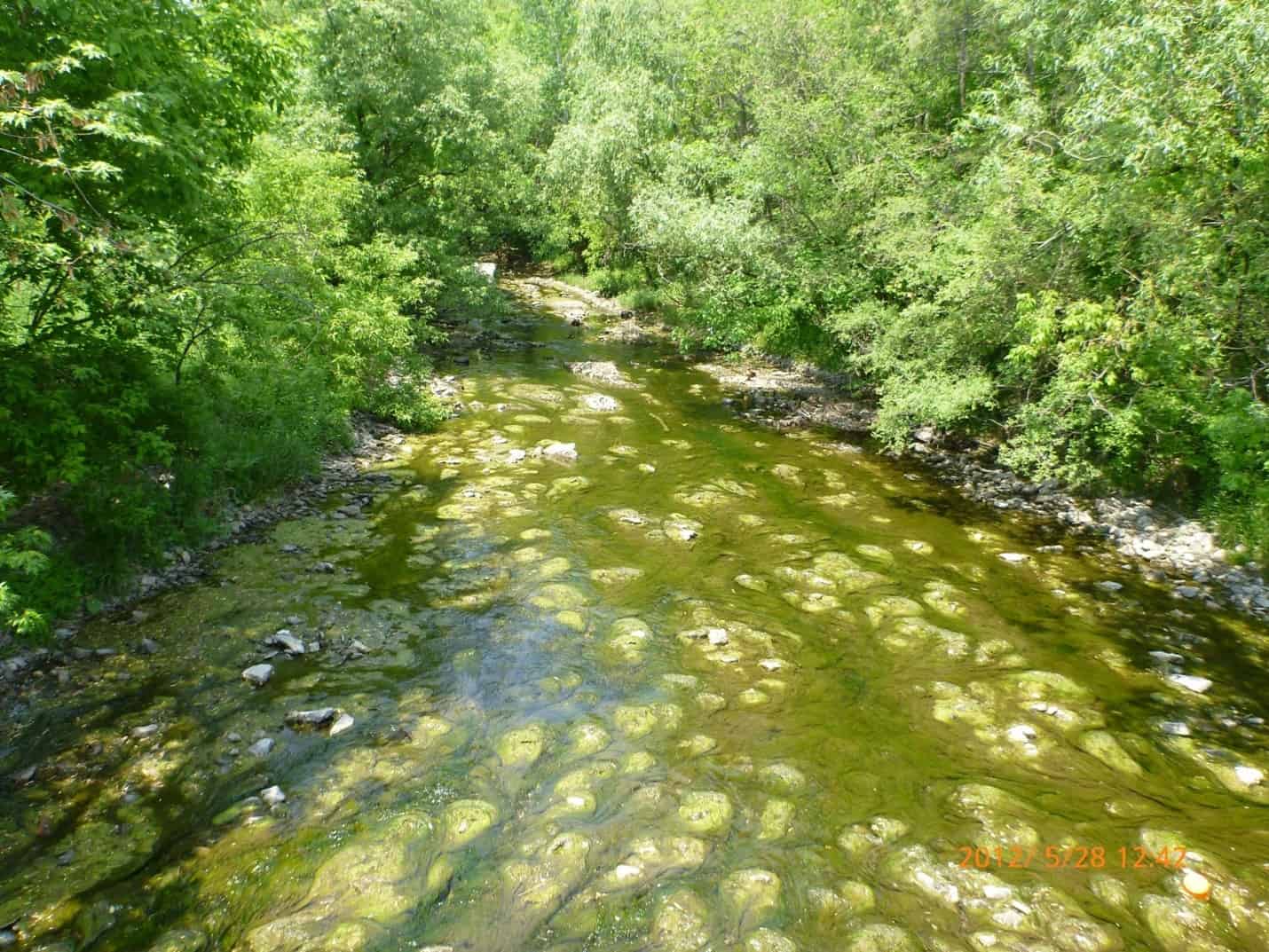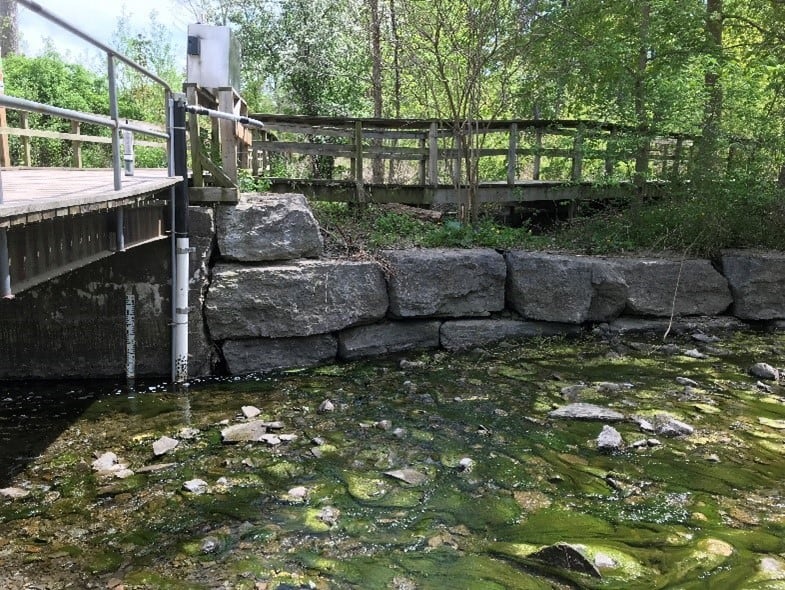Some small creeks in the Credit River Watershed looked a little green this spring. That’s because of algae! An overgrowth of algae, called an algae bloom can happen when we have a hot and dry spring. The last time there were algae blooms in the Credit River Watershed was in 2012. That spring, the temperature was 3.4 °C warmer than normal and we had about half as much rain. This spring, the temperature was 1.4 °C warmer than normal and we had about two-thirds the rain we normally get in spring. Algae is a normal part of the ecosystem but too much disrupts the balance in our waterways. Let’s take a closer look:

Algae can reduce oxygen available to aquatic life
Aquatic life like fish and benthic macroinvertebrates (insects and other small organisms found on the stream bed) live in these creeks and they need oxygen dissolved in the water to survive. In Mississauga’s Sheridan Creek, for example, most aquatic life needs at least 4 milligrams per litre of dissolved oxygen to be healthy. If oxygen levels get too low for too long, fish and other animals in the water will either leave the area or die off.
Like all plants, algae make food for themselves through photosynthesis. They consume sunlight and carbon dioxide and produce oxygen. Overnight, plants use oxygen instead of producing it. Because of this, we see big variations in oxygen levels over the course of a day where levels are high during the day and low overnight. We pay close attention to low oxygen levels and our real-time monitoring stations help us to do that.

Monitoring water quality in real-time
Our real-time water monitoring stations work around the clock collecting data on water quality across the watershed, including dissolved oxygen. Our station in Sheridan Creek at Rattray Marsh Conservation Area, for example, showed a big daily range in dissolved oxygen around May 20 when the algae bloom was at its peak. Fortunately, concentrations did not drop below the 4 milligram per litre threshold.

What’s next?
Our Water and Climate Change Science team is working to understand what causes algae blooms to occur. One way we are doing this is by measuring how much heat accumulates in water over time (growing degree days). In Cooksville Creek, we have been calculating growing degree days for the past 10 years. So far, the years with the highest growing degree days are also the years when algae blooms have happened. Understanding what causes these blooms may help us to mitigate their effects in the future through targeted restoration activities.
You can view live data from CVC’s 11 real-time water quality stations to explore water temperature in our local waterways. Learn how to access the data from real-time water quality stations.
By Lorna Murison, Coordinator, Water and Climate Change Science







